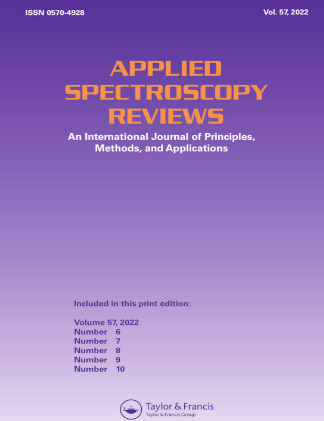Vibrational spectroscopy and multivariate analysis techniques in the clinical immunology laboratory: a review of current applications and requirements for diagnostic use
IF 5.4
2区 化学
Q1 INSTRUMENTS & INSTRUMENTATION
引用次数: 2
Abstract
Abstract Laboratory tests are essential for clinicians to reach an accurate diagnosis and informing appropriate treatments. The expansion in the use of immunotherapies has highlighted the gap between the knowledge of molecular pathways and targeted therapies with availability of laboratory tests. The translation of vibrational spectroscopic techniques such as Fourier-transform infrared (FTIR) spectroscopy and Raman spectroscopy into clinical practice offer rapid-, noninvasive and inexpensive methods to obtain information on the molecular composition of biological samples. Advances in instrumentation, data analysis and machine learning techniques are key developments that have permitted the availability of results to clinicians in an appropriate timescale. Immunological disorders are complex, often demonstrating interaction across multiple molecular pathways which results in delayed diagnosis. Vibrational spectroscopy is being applied in many fields and here we present a review of its potential use in clinical immunology. This review addresses the potential use of spectroscopy in clinical immunology. Potential benefits that these novel techniques offer, including enhanced definition of molecular process and its use in disease diagnosis, monitoring and treatment response is discussed. Whilst not covered extensively, an overview of the method principle, quality control processes, and the requirements for multivariate data analysis is included to provide the reader with sufficient understanding of its application in the clinical setting.临床免疫学实验室中的振动光谱学和多变量分析技术:当前诊断应用和要求的综述
实验室检查是临床医生准确诊断和告知适当治疗的必要条件。免疫疗法使用的扩大凸显了分子途径知识与可获得实验室测试的靶向疗法之间的差距。傅里叶变换红外光谱(FTIR)和拉曼光谱等振动光谱技术转化为临床实践提供了快速、无创和廉价的方法来获取生物样品的分子组成信息。仪器、数据分析和机器学习技术的进步是关键的发展,使临床医生能够在适当的时间内获得结果。免疫疾病是复杂的,往往表现出跨多个分子途径的相互作用,导致延迟诊断。振动光谱学在许多领域都有应用,这里我们就其在临床免疫学中的潜在应用进行综述。本文综述了光谱学在临床免疫学中的潜在应用。讨论了这些新技术提供的潜在好处,包括增强分子过程的定义及其在疾病诊断、监测和治疗反应中的应用。虽然没有广泛覆盖,但包括方法原理,质量控制过程和多变量数据分析要求的概述,以使读者充分了解其在临床环境中的应用。
本文章由计算机程序翻译,如有差异,请以英文原文为准。
求助全文
约1分钟内获得全文
求助全文
来源期刊

Applied Spectroscopy Reviews
工程技术-光谱学
CiteScore
13.80
自引率
1.60%
发文量
23
审稿时长
1 months
期刊介绍:
Applied Spectroscopy Reviews provides the latest information on the principles, methods, and applications of all the diverse branches of spectroscopy, from X-ray, infrared, Raman, atomic absorption, and ESR to microwave, mass, NQR, NMR, and ICP. This international, single-source journal presents discussions that relate physical concepts to chemical applications for chemists, physicists, and other scientists using spectroscopic techniques.
 求助内容:
求助内容: 应助结果提醒方式:
应助结果提醒方式:


